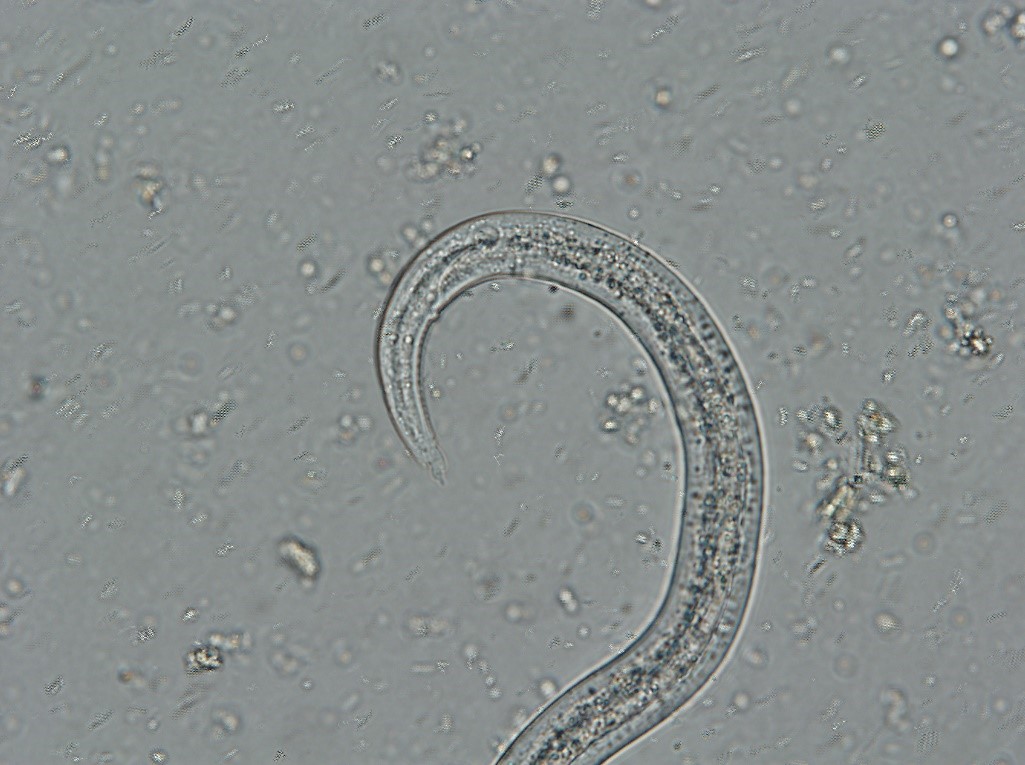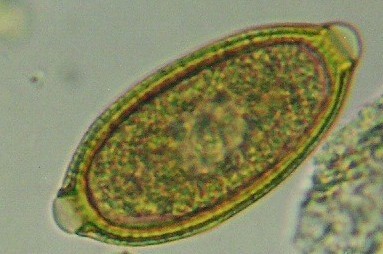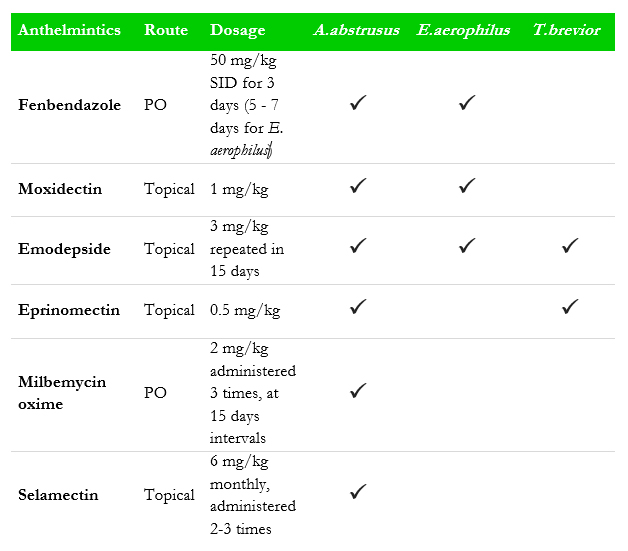Feline lungworms include a range of metastrongyloid worms whose adults live in the lungs of their vertebrate hosts, including cats. Some trichurids and flukes also live in the respiratory system of cats and are zoonotic.
Distribution
Aelurostrongylus abstrusus and E. aerophilus have a worldwide distribution. Troglostrongylus spp. have been reported in Europe. Angiostrongylus chabaudi has been detected in cats in Italy, Romania, Greece and Bulgaria [1,2,3]. Oslerus rostratus has been reported in the United States, Pacific Islands, Southern Europe, and the Middle East.
Clinical signs
Infection by lungworms in cats may be subclinical. Some cats may present mild to severe respiratory signs due to allergic bronchopneumonia, occasionally complicated by pleural effusion or pneumothorax. Common clinical signs in sick cats include productive cough, mucopurulent nasal discharge, tachypnoea, dyspnoea with laboured, abdominal breathing and end-inspiratory crackles upon auscultation [4].

Figure 1. Aelurostrongylus abstrusus larva with a ‘kinked’ tail in cat faeces isolated by the Baermann technique (Image credit: Dr. A. D. Mihalca)

Figure 2. Trogostrongylus brevior larva with a ‘kinked’ tail in cat faeces isolated by the Baermann technique (Image credit: Dr. H. Salant)

Figure 3. Eucoleus aerophilus adult worms under the epithelium of the trachea (Image credit: Dr. A. D. Mihalca)

Figure 4. Eucoleus aerophilus egg (Image credit: Dr. G. Perez-Tort)
Diagnosis
First-stage larvae of feline lungworms can be detected using the Baermann method and differentiated to the species level by morphology (approximately 360-415 µm in A. abstrusus (Fig. 1), 335-412 µm in O. rostratus, 300-357 µm in T. brevior (Fig. 2), 269-317 µm in T. subcrenatus, and 307-420 μm in A. chabaudi, based on larvae from wildcats). As their length may overlap [3,5], species identity is usually preferentially confirmed by genetic characterization in epidemiological studies. E. aerophilus infections can be diagnosed using standard faecal flotation, by detecting eggs (approximately 60-65 x 25-40 mm) with a typical barrel shape, asymmetric polar plugs, with no thickening at the base of the plug.
Treatment
For preventative treatment options, refer to Table 6.
Table 6. Routes of administration, dosage and efficacies of commonly utilised anthelmintics against the main lungworms of cats [4].
Prevention and Control
Cats should be kept indoors and should not be allowed to hunt. The litter box should be changed daily.
Public health considerations
Human infections with E. aerophilus have been reported in several countries around the world. The most common signs described were acute bronchitis and bronchiolitis, usually with asthma and a productive cough.
References
[1] Varcasia A, Tamponi C, Brianti E, Cabras PA, Boi R, Pipia AP, Giannelli A, Otranto D, Scala A. Angiostrongylus chabaudi Biocca, 1957: a new parasite for domestic cats? Parasit Vectors. 2014;7:588.
[2] Traversa D, Lepri E, Veronesi F, Paoletti B, Simonato G, Diaferia M, Di Cesare A. Metastrongyloid infection by Aelurostrongylus abstrusus, Troglostrongylus brevior and Angiostrongylus chabaudi in a domestic cat. Int J Parasitol. 2015;45:685-690.
[3] Gherman CM, Ionică AM, D’Amico G, Otranto D, Mihalca AD. Angiostrongylus chabaudi (Biocca, 1957) in wildcat (Felis silvestris silvestris, S) from Romania. Parasitol Res. 2016;115:2511-2517.
[4] Pennisi MG, Hartmann K, Addie DD, Boucraut-Baralon C, Egberink H, Frymus T, Gruffydd-Jones T, Horzinek MC, Hosie MJ, Lloret A, Lutz H, Marsilio F, Radford AD, Thiry E, Truyen U, Möstl K; European Advisory Board on Cat Diseases. Lungworm disease in cats: ABCD guidelines on prevention and management. J Feline Med Surg. 2015;17:626-636.
[5] Brianti E, Giannetto S, Dantas-Torres F, Otranto D. Lungworms of the genus Troglostrongylus (Strongylida: Crenosomatidae): neglected parasites for domestic cats. Vet Parasitol. 2014;202:104-112.

